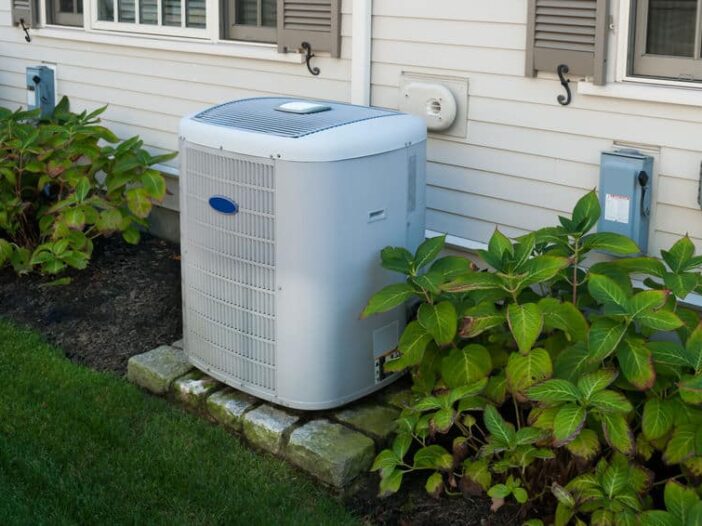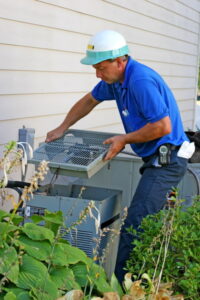If you are in the market for a new AC unit, it’s important to understand the SEER standard and how it affects your cooling system. You may have seen this term thrown around when browsing for air conditioners, but do you really know what it means? In this blog post, we’re breaking down the SEER standard for AC units and why it’s important for you to know. From its history to recent updates, we’ll cover all the essentials so you can make an informed decision when it comes to choosing the best cooling system for your home.
Understanding the SEER standard
The SEER standard, or Seasonal Energy Efficiency Ratio, is a measure of the energy efficiency of an air conditioner. It calculates the cooling output of the unit during a typical cooling season divided by the total electrical energy input. In simple terms, the SEER rating tells you how efficiently your air conditioner uses electricity to cool your home.
Why is this important? Well, an energy efficient air conditioner with a high SEER rating can save you a significant amount of money on your energy bills. It consumes less electricity to achieve the same cooling output as a less efficient unit with a lower SEER rating. This means you can stay cool and comfortable without breaking the bank.
When shopping for a new air conditioner, be sure to check the SEER rating. The higher the rating, the more energy efficient the unit. While units with higher SEER ratings may have a higher upfront cost, the long-term energy savings can outweigh the initial investment.
Understanding the SEER standard is essential for homeowners who want to make informed decisions about their cooling systems. By choosing an energy efficient air conditioner with a high SEER rating, you can stay cool, save money, and reduce your environmental impact. So, be sure to keep the SEER rating in mind when shopping for a new AC unit.
A Brief History of the SEER Standard
The history of the SEER standard highlights the HVAC industry’s dedication to energy efficiency and environmental sustainability. The concept of measuring the energy efficiency of air conditioners dates back to the 1970s when the energy crisis sparked a need for more efficient cooling systems.
In 1979, the Department of Energy (DOE) introduced the SEER standard as a way to measure the efficiency of residential air conditioners. Initially, the minimum SEER rating was set at 6, but as technology advanced and energy efficiency became a top priority, the standard evolved.
In the 1990s, a significant milestone occurred when the minimum SEER rating was increased to 10. This jump reflected a shift in focus towards more energy-efficient units and encouraged manufacturers to develop new technologies that could achieve higher SEER ratings.
Since then, there have been ongoing discussions within the industry about further raising the minimum SEER rating. This shows that the SEER standard continues to evolve and adapt to new advancements in cooling technology.
Overall, the history of the SEER standard demonstrates the industry’s commitment to reducing energy consumption, saving homeowners money on their electricity bills, and mitigating environmental impact. As technology continues to improve, we can expect even higher SEER ratings in the future, paving the way for even more efficient and sustainable cooling systems.
Recent SEER Standard Updates
In recent years, there have been some significant updates to the SEER standard that homeowners should be aware of. As technology continues to advance, the HVAC industry has been working hard to improve the energy efficiency of air conditioners and reduce their environmental impact.
One of the most notable updates is the increase in the minimum SEER rating for new units. The Department of Energy (DOE) has gradually raised the minimum standard over the years to encourage the use of more energy-efficient cooling systems. This means that newer AC units are likely to have higher SEER ratings than older models.
Another important update is the introduction of ENERGY STAR certified AC units. These units meet strict energy efficiency guidelines set by the Environmental Protection Agency (EPA) and can provide even greater energy savings for homeowners. Look for the blue ENERGY STAR label when shopping for a new AC unit to ensure you’re getting a highly efficient model.
It’s also worth noting that some states have implemented their own SEER requirements that are higher than the national standards. This means that depending on where you live, you may need to choose an AC unit with a higher SEER rating to meet local regulations.
Staying up to date with these recent updates to the SEER standard is essential for homeowners who want to make environmentally friendly and cost-effective choices when purchasing a new AC unit. By choosing a unit with a higher SEER rating and ENERGY STAR certification, you can maximize your energy savings and reduce your carbon footprint.
Get in touch with the HVAC professionals at Sherlock to discuss the best options for your home.
The Importance of Knowing Your SEER Rating
Understanding your AC unit’s SEER rating is crucial for homeowners for several reasons. First and foremost, knowing your SEER rating allows you to gauge the energy efficiency of your air conditioner. A higher SEER rating indicates a more efficient unit that uses less electricity to cool your home. This can result in significant savings on your energy bills over time.
Additionally, knowing your SEER rating can help you make informed decisions about your cooling system. If your AC unit has a low SEER rating, it may be worth considering an upgrade to a more efficient model. By investing in a higher SEER rated unit, you can enjoy better cooling performance while reducing your carbon footprint.
Furthermore, being aware of your SEER rating can help you plan for the future. As energy efficiency standards continue to evolve and more stringent regulations are introduced, having a higher SEER rated AC unit ensures that you are prepared for any future requirements or regulations in your area.
In summary, knowing your AC unit’s SEER rating is essential for maximizing energy efficiency, reducing costs, and being environmentally conscious. So, take the time to find out your SEER rating and make informed decisions that benefit both your comfort and your wallet.
How to Find Your AC Unit’s SEER Rating
To find your AC unit’s SEER rating, there are a few different ways you can go about it. The first option is to check the unit’s product documentation or user manual. These documents usually provide detailed information about the SEER rating and other important specifications of the AC unit. You can also look for a label on the unit itself, which is often located on the outside of the equipment. This label typically displays important information, including the SEER rating.
If you’re having trouble locating this information, don’t hesitate to reach out to the manufacturer or consult with a professional HVAC technician. They should be able to help you determine the SEER rating of your AC unit and answer any questions you may have. Remember, knowing your AC unit’s SEER rating is essential for making informed decisions about your cooling system and maximizing energy efficiency. So, take the time to find out this important information and enjoy the benefits of a well-informed decision.
What to Know Before Purchasing a New AC Unit
When it comes to purchasing a new AC unit, there are a few key things that homeowners need to know. First and foremost, it’s important to understand the SEER rating and its significance. As we discussed earlier in this blog post, the SEER rating indicates the energy efficiency of the air conditioner. The higher the SEER rating, the more energy efficient the unit, which can result in lower energy bills and reduced environmental impact.
In addition to the SEER rating, homeowners should also consider their specific cooling needs. Factors such as the size of your home, climate, and usage patterns can all affect the performance and efficiency of your AC unit. It’s essential to choose a unit that is properly sized for your home to ensure optimal cooling and energy efficiency.
Another important consideration is the overall quality and reputation of the manufacturer. Do your research and look for AC units from reputable brands that have a track record of producing high-quality, reliable products. Reading customer reviews and seeking recommendations from friends or family members can also be helpful in making an informed decision.
Lastly, don’t forget about the importance of regular maintenance and servicing. Even the most energy-efficient AC unit can lose efficiency over time if it’s not properly maintained. Schedule regular inspections and cleanings to keep your AC unit running at its best and to extend its lifespan.
By keeping these factors in mind, homeowners can make an informed decision when purchasing a new AC unit that meets their cooling needs, maximizes energy efficiency, and provides long-term cost savings.
Contact the HVAC professionals at Sherlock for expert help and guidance. We will help you determine the best energy-efficient AC options for your home.
Whether you require installation, repair, or maintenance, our technicians will assist you with top-quality service at any time of the day or night. Take comfort in knowing your indoor air quality is the best it can be with MOE heating & cooling services Ontario's solution for heating, air conditioning, and ventilation that’s cooler than the rest.
Contact us to schedule a visit. Our qualified team of technicians, are always ready to help you and guide you for heating and cooling issues. Weather you want to replace an old furnace or install a brand new air conditioner, we are here to help you. Our main office is at Kitchener but we can service most of Ontario's cities
Source link


